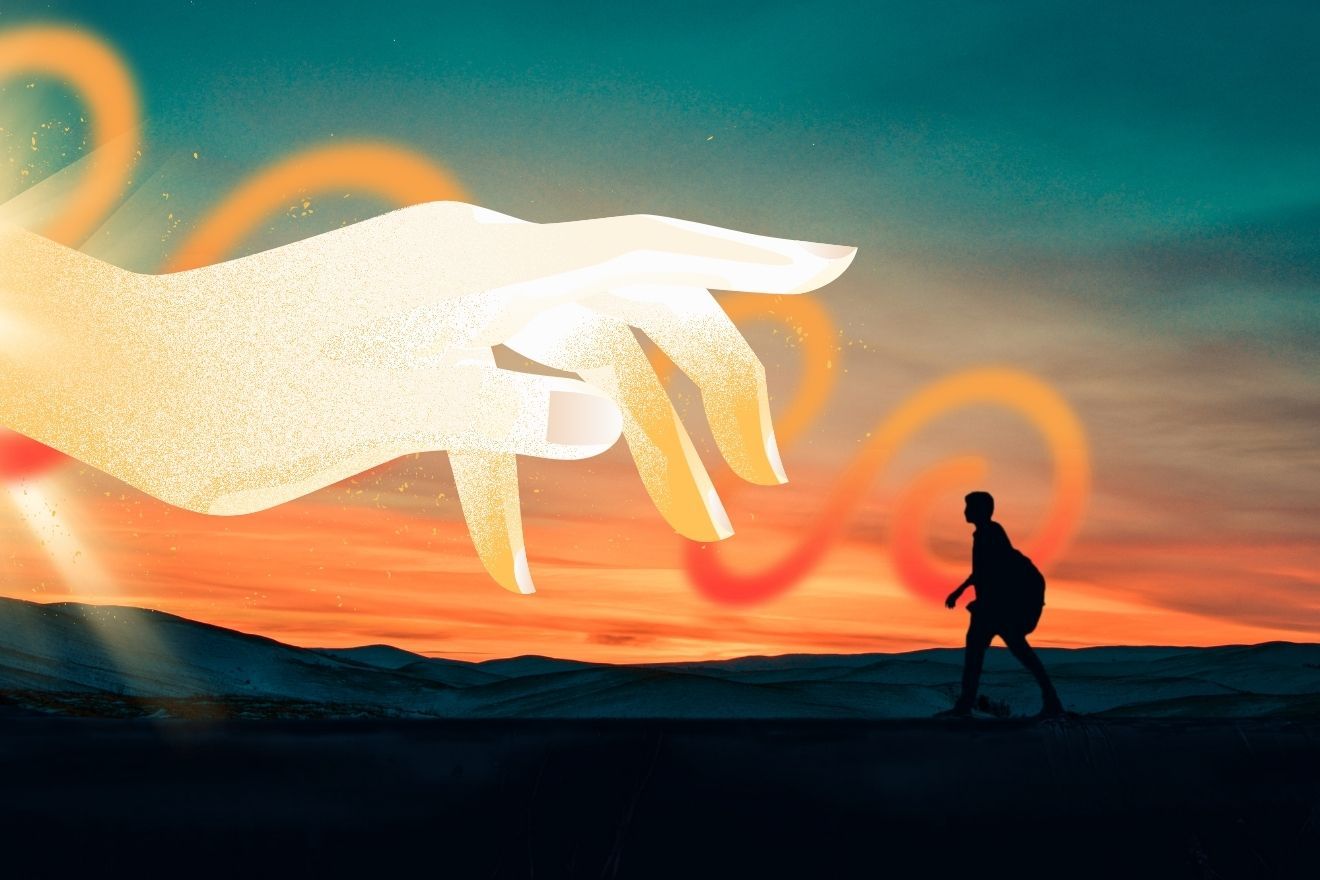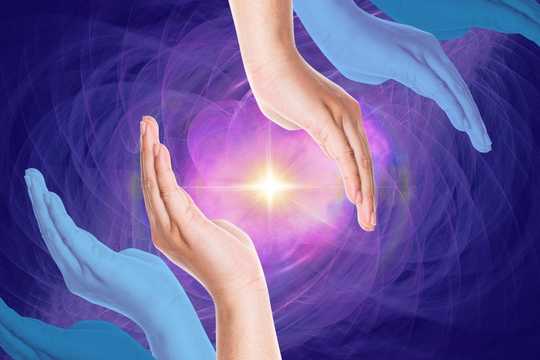Psychedelics have been around for a very long time. As humans, our relationship with plant substances is over 10,000 years old. Here is an overview of some of the most influential figures in psychedelic history.
“To be shaken out of the ruts of ordinary perception, to be shown for a few timeless hours the outer and the inner world…this is an experience of inestimable value to everyone.”
— Aldous Huxley, English writer and philosopher
1. Maria Sabina (1894–1985)
Maria Sabina, a Mazatec sabia (wise woman) from Oaxaca, Mexico, was an influential figure who introduced the sacred use of psilocybin mushrooms, known as teonanácatl, to the Western world. Her ceremonies, called veladas, combined chanting, poetry, and the ingestion of mushrooms and were integral to her healing practices.
In 1955, she allowed R. Gordon Wasson, an American ethnomycologist and banker, to participate in a mushroom ceremony, a decision that led to global awareness of psychedelics. Wasson published an article in Life Magazine detailing his expeditions to Oaxaca, Mexico, and how he sought to learn about the sacred rites and mushrooms of the Mazatec people. He described working closely with a “curandera,” which he was initially protecting her identity with the pseudonym Eva Mendez.
She agreed to guide Wasson on the sacred veladas only if he promised to hide her identity and never publish photos. Despite his promises, Wasson later revealed her true identity as Maria Sabina in his two-volume book Mushrooms, Russia and History. He also published her photographs widely, further violating the trust she had placed in him.
It’s important to note that Wasson inaccurately refers to Sabina as a “curandera,” She has stated she is a sabia, not a curandera, and that the practice and role of each are different.
While her work highlighted the deep spiritual and therapeutic roots of psychedelics, the sudden influx of Western seekers disrupted her community and marginalized her role.
Sabina’s legacy underscores the need for respectful engagement with indigenous traditions and the profound spiritual dimensions of psychedelics.
2. Albert Hofmann (1906–2008)
Albert Hofmann, a Swiss chemist, changed the course of psychedelic history with his synthesis of LSD in 1938. Five years later, he had a significant role in its rediscovery when he accidentally consumed it and experienced its effects. His subsequent self-experimentation, famously commemorated on “Bicycle Day,” revealed LSD’s potential to alter consciousness.
Hofmann described his experiences in his book LSD: My Problem Child:
“It happened on a May morning — I have forgotten the year — but I can still point to the exact spot where it occurred, on a forest path on Martinsberg above Baden, Switzerland. As I strolled through the freshly greened woods filled with bird song and lit up by the morning sun, all at once, everything appeared in an uncommonly clear light. Was this something I had simply failed to notice before? Was I suddenly discovering the spring forest as it actually looked? It shone with the most beautiful radiance, speaking to the heart as though it wanted to encompass me in its majesty. I was filled with an indescribable sensation of joy, oneness, and blissful security.”
Hofmann also isolated psilocybin and psilocin, the active compounds in mushrooms, helping bridge indigenous knowledge with Western science. Throughout his life, Hofmann advocated for the responsible use of psychedelics in therapy and spiritual exploration, becoming a central influential figure in legitimizing psychedelics as tools for understanding the human mind.
3. Aldous Huxley (1894–1963)
English writer Aldous Huxley used his literary platform to popularize the transformative potential of psychedelics. In The Doors of Perception (1954), Huxley described his mescaline experience, framing psychedelics as a way to access deeper layers of reality. Huxley shares his thoughts on how invaluable an experience with mescaline would be for all people.
“I am not so foolish as to equate what happens under the influence of mescalin or of any other drug, prepared or in the future preparable, with the realization of the end and ultimate purpose of human life: Enlightenment, the Beatific Vision. All I am suggesting is that the Mescalin experience is what Catholic theologians call “a gratuitous grace,” not necessary to salvation but potentially helpful and to be accepted, thankfully, if made available. To be shaken out of the ruts of ordinary perception, to be shown for a few timeless hours the outer and the inner world, not as they appear to an animal obsessed with survival or to a human being obsessed with words and notions, but as they are apprehended, directly and unconditionally, by Mind at Large — this is an experience of inestimable value to everyone and especially to the intellectual.”
Huxley’s intellectual and spiritual approach influenced artists, thinkers, and scientists, catalyzing the cultural and academic interest that fueled the psychedelic movement.
4. R. Gordon Wasson (1898–1986)
R. Gordon Wasson, an amateur ethnomycologist, played a pivotal role as the influential figure who brought psilocybin mushrooms to global attention. As mentioned above, his 1957 Life magazine article, Seeking the Magic Mushroom, documented his participation in a Mazatec mushroom ceremony with Maria Sabina.
Wasson’s writings helped spark Western fascination with psychedelics, leading to both scientific inquiry and widespread recreational use. His work highlighted the deep cultural significance of mushrooms, though it also unintentionally contributed to their commodification and exploitation.
5. Dr. Charles Savage (1920–2000)
Dr. Charles Savage was one of the first researchers, an influential figure, to explore LSD’s potential as a therapeutic tool. He published the first study on using LSD to treat depression in the American Journal of Psychiatry. Savage stated in the published article:
“Improvement obtained during the course of LSD therapy was not greater than that obtained without its use in comparable cases. However, LSD affords therapeutically valuable insights into unconscious processes by the medium of the hallucinations it produces.”
Although the results were inconclusive, his work laid the foundation for later psychedelic-assisted psychotherapy by showing that psychedelics could facilitate emotional breakthroughs and self-reflection. Savage’s research helped frame psychedelics as tools for healing rather than merely mind-altering substances.
Discover More About LSD and Its Potential Applications
- Read the Top 10 Psychedelic Support Articles about LSD
- Do you know if LSD Can Improve Your Learning Potential?
- Explore LSD vs Ayahuasca Experience: Which Psychedelic Therapy Is a Good Fit for You?
- Understand the Differences: LSD vs. Psilocybin
- Compare the Therapeutic Potential of MDMA and LSD
6. Timothy Leary (1920–1996)
Timothy Leary, a Harvard psychologist, became the most publicized influential figure of the 1960s psychedelic movement. He and Richard Alpert began the Harvard Psilocybin Project, which aimed to document the effects of psilocybin, administer it to volunteer subjects and record their real-time experiences. At that time, neither psilocybin nor LSD were illegal in the United States.
Harvard faculty and administrators started to raise concerns about the safety of their subjects and the lack of rigor in their methods in 1962. Critics noted that Leary and Alpert often conducted studies while under the influence of psilocybin themselves, and they used poorly controlled conditions, including a lack of randomization when selecting participants. The Harvard Crimson accused the pair of promoting recreational drug use rather than conducting serious research.
Though Leary and Alpert defended the scientific purpose of their work and agreed to policies banning undergraduate participation, their reputations suffered. In 1963, Harvard dismissed Alpert for administering psilocybin to an undergraduate off-campus. Shortly after, the university terminated Leary, bringing the Psilocybin Project to an abrupt end.
Both men became cultural icons despite their dismissal from academia and criticism for unscientific methods. Leary popularized the phrase “Turn On, Tune In, Drop Out,” symbolizing the counterculture movement. His work, controversial as it was, profoundly shaped the psychedelic and human potential movements of the 1960s and beyond. For instance, his work introduced the concept of set and setting, which remains critical to safe psychedelic use today.
7. Ram Dass (formerly Richard Alpert) (1931–2019)
Richard Alpert, later known as Ram Dass or Baba Ram Dass, was a Harvard psychologist and collaborator with Timothy Leary. After being dismissed from Harvard for his controversial psychedelic research, this influential figure traveled to India in 1967 and underwent a spiritual transformation, adopting the name Ram Dass (“Servant of Ram”). He authored Be Here Now, a book on spirituality, yoga, meditation and mindfulness.
Check out a psychedelic symposium where Ram Dass and Timothy Leary reunite at Harvard for the first time since getting kicked out. The two discuss early Harvard days, bad trips, individual differences, the Harvard Psychedelic Research Project, transcendental thinking, mind-expanding chemistry, and the role of psychedelics in consciousness exploration.
Ram Dass helped integrate psychedelics into a broader spiritual framework, influencing both therapeutic and spiritual communities.
8. Stanislav Grof (1931–Present)
Stanislav Grof, a pioneering influential figure in psychedelic research, is best known for his work in transpersonal psychology, psychedelic psychotherapy, and non-ordinary states of consciousness.
His early research in the 1950s and 1960s at the Psychiatric Research Institute in Prague and later at the Maryland Psychiatric Research Center explored the therapeutic potential of LSD and its effect on the human psyche. His observations of the effect of LSD and his research on Otto Rank’s theory of birth trauma led to the development of his theory, “expanded cartography of the human psyche.”
After LSD was banned, Grof developed Holotropic Breathwork with his wife, Christina Groff. Holotropic Breathwork is a non-drug technique that uses accelerated breathing, drawing, music, and bodywork to induce altered states of consciousness. This method became a cornerstone of his transpersonal psychology framework, focusing on spiritual and transcendent experiences as integral to understanding the human psyche.
Grof’s extensive writings, including LSD: Doorway to the Numinous: The Groundbreaking Psychedelic Research into Realms of the Human Unconscious and LSD Psychotherapy, helped legitimize the use of psychedelics in therapy and reframe them as tools for healing and exploration rather than recreational use. His contributions remain foundational in the modern psychedelic renaissance, influencing contemporary therapy, neuroscience, and spiritual practices.
9. Alexander Shulgin (1925–2014) and Ann Shulgin (1931–2022)
Alexander Theodore “Sasha” Shulgin was an American biochemist and influential figure who synthesized over 200 psychoactive compounds, most notably MDMA. He and his wife, Ann, extensively documented their experiences with these substances in PiHKAL (Phenethylamines I Have Known and Loved): A Chemical Love Story and TiHKAL (Tryptamines I Have Known and Loved): The Continuation, creating a detailed resource for researchers and enthusiasts. Shulgin’s work significantly advanced the field of psychedelic pharmacology, laying the groundwork for today’s therapeutic studies on MDMA and other compounds.
Ann Shulgin, a psychotherapist, explored the therapeutic potential of MDMA and other psychedelics, particularly in enhancing emotional openness and healing trauma. Her insights on guided psychedelic experiences emphasized the importance of creating a safe, compassionate environment. Ann’s work has influenced the development of psychedelic-assisted psychotherapy, particularly in relational and emotional contexts.
10. James Mooney (1861–1921)
Smithsonian Institute archeologist James Mooney was among the first Westerners to document the use of peyote in Native American rituals. His work with the Native American Church helped preserve and legitimize the ceremonial use of peyote, framing it as a religious practice protected under U.S. law. Mooney’s advocacy laid the groundwork for contemporary discussions on the cultural and legal rights of indigenous peoples to use psychedelics.
Learn More About Indigenous People and Psychedelics
- Understand How We Can We Pay Indigenous People the Respect They Deserve
- Watch Bianca Sebben Discuss Equity and Indigenous Plant Medicine Traditions
- Learn from Miriam Volat and Cody Swift About Indigenous Sovereignty and Plant Medicines
- Gain Knowledge About the Ethics of Psychedelic Evolution Needed to Protect Indigenous
11. Roland Griffiths (1946–2023)
Roland Griffiths, an American psychopharmacologist, revitalized psychedelic science in the 21st century. In 2019, he created the Center for Psychedelic and Consciousness Research at Johns Hopkins, which is the first psychedelic research center in the US.
His studies demonstrated psilocybin’s effectiveness in treating depression, anxiety, and addiction, often inducing profound spiritual experiences. In 2006, he published his landmark paper “Psilocybin Can Occasion Mystical-Type Experiences Having Substantial and Sustained Personal Meaning and Spiritual Significance” in Psychopharmacology. This double-blind study concluded, “When administered under supportive conditions, psilocybin occasioned experiences similar to spontaneously occurring mystical experiences. The ability to occasion such experiences prospectively will allow rigorous scientific investigations of their causes and consequences.”
Griffiths’ work provided the empirical evidence needed to reframe psychedelics as serious tools for mental health, influencing policy changes and sparking global interest in psychedelic research.
12. Rick Doblin (1953–Present)
Rick Doblin founded MAPS—the Multidisciplinary Association for Psychedelic Studies—in 1986, dedicating his life to legalizing psychedelics for therapeutic use. Under Doblin’s leadership, MAPS has conducted rigorous trials on MDMA for PTSD, showing remarkable success in treatment-resistant cases. His tireless advocacy has been instrumental in normalizing psychedelics as medicine and pushing for FDA approval.
Therefore, each influential figure on this list has not only advanced psychedelic research but also shaped cultural understanding and access, blending science, spirituality, and activism to pave the way for the modern psychedelic renaissance. It is an exciting time for mental health advocates, providers, therapists, and patients. With the resurgence of interest in psychedelic research, only time will tell where the journey will lead. The future is bright and mystical.
Follow your Curiosity
Sign up to receive our free psychedelic courses, 45 page eBook, and special offers delivered to your inbox.References
Baba Ram Dass. (2023, June 7). Ram Dass & Timothy Leary — A Psychedelic Symposium. YouTube. https://www.youtube.com/watch?v=VtssK8Jq5xU
Frame, T. (2023, October 21). Psychedelic Timeline. Psychedelic Times. https://psychedelictimes.com/psychedelic-timeline/
Gerber, K., Flores, I. G., Ruiz, A. C., Ali, I., Ginsberg, N. L., & Schenberg, E. E. (2021). Ethical Concerns about Psilocybin Intellectual Property. ACS Pharmacology & Translational Science, 4(2), 573–577. https://doi.org/10.1021/acsptsci.0c00171
Griffiths, R. R., Richards, W. A., McCann, U., & Jesse, R. (2006). Psilocybin Can Occasion Mystical-Type Experiences Having Substantial and Sustained Personal Meaning and Spiritual Significance. Psychopharmacology, 187(3), 268�–283. https://doi.org/10.1007/s00213-006-0457-5
Moghaddam, B. (2023). IN MEMORIAM: Roland R. Griffiths, Ph.D. Neuropsychopharmacology, 49. https://doi.org/10.1038/s41386-023-01781-3
MAPS Staff. (2024, November 20). Rick Doblin, Ph.D., Founder and President. Multidisciplinary Association for Psychedelic Studies . https://maps.org/people/rick-doblin/
Smith, C. S. (2008, April 30). Albert Hofmann, the Father of LSD, Dies at 102. The New York Times. https://www.nytimes.com/2008/04/30/world/europe/30hofmann.html
Savage, C. (1952). LYSERGIC ACID DIETHYLAMIDE (LSD-25): A Clinical-Psychological Study. American Journal of Psychiatry, 108(12), 896–900. https://doi.org/10.1176/ajp.108.12.896
Wikipedia Contributors. (2024a, May 3). María Sabina. Wikipedia. https://en.wikipedia.org/wiki/Mar%C3%ADa_Sabina#Interaction_with_the_Western_world
Wikipedia Contributors. (2024b, August 9). James Mooney. Wikipedia. https://en.wikipedia.org/wiki/James_Mooney
Wikipedia Contributors. (2024c, October 13). R. Gordon Wasson. Wikipedia. https://en.wikipedia.org/wiki/R._Gordon_Wasson#
Wikipedia Contributors. (2024d, November 2). Ann Shulgin. Wikipedia. https://en.wikipedia.org/wiki/Ann_Shulgin
Wikipedia Contributors. (2024e, November 23). Stanislav Grof. Wikipedia. https://en.wikipedia.org/wiki/Stanislav_Grof






